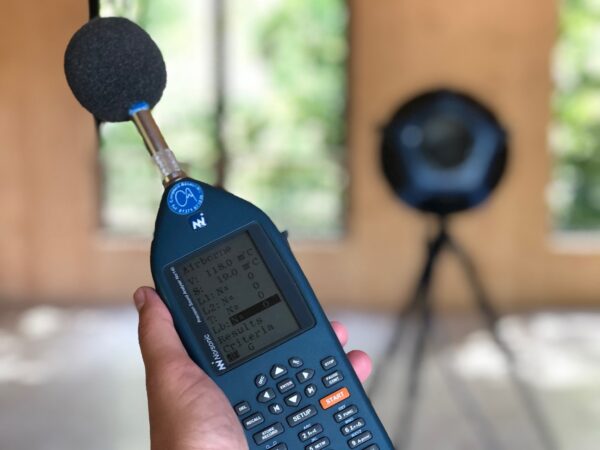Sound insulation testing is a requirement of Approved Document E to assess the sound insulation performance of party walls and floors between dwellings. Sound testing is usually required once the property is nearing completion and is carried out to determine if the minimum Building Regulation Part E for sound insulation has been met. The contractor is responsible for arranging the sound testing to demonstrate compliance to Building Control that the dividing partitions have achieved compliance with Approved Document E for sound insulation. The aforementioned procedure is more commonly referred to as Approved Document E (ADE) sound testing or pre-completion testing (PCT).

Sound Testing for Approved Document E
Approved Document E – ‘Resistance to the passage of sound’ came into force on July 1st 2003 and provided the minimum sound insulation values for new and converted dwellings. This includes the following building types: flats, houses, student accommodation, care homes, hotels and schools. Approved Document E is a government-issued document which provides guidance for building contractors, architects and developers involved in the design and conversion of buildings for residential purposes. Approved Document E explains the sound insulation requirement for each type of building and provides acoustic advice and details about building procedures and materials that may affect the sound test results.
Airborne and Impact Sound Testing
The sound insulation levels required to pass Part E are usually 45dB for airborne sound testing for walls and floors, and 62dB for Impact Sound Testing on new build, however sometimes a higher target may be required in-line with the Code for Sustainable Homes; this is usually in defined in the following figures +3, 5 & 8dB, this means if its plus 5dB you will need to achieve 50dB for airborne and 57dB for impact sound testing. Obviously if you need to comply with the Code for Sustainable Homes then special attention must be shown to the acoustic design from the offset to reduce the chance of sound testing failure. For conversion properties a slightly easier target of 43dB for airborne wall and floors and 64dB for Impact Sound Testing is required.

We can help you to achieve this more robust design criterion. We can also help if your building fails the sound insulation testing by offering a targeted acoustic design solution saving time and potential costs.
Contact us to book in your sound insulation testing
if you would like more information on sound insulation testing in London please contact us at Info@aptsoundtesting.co.uk or visit our website at www.aptsoundtesting.co.uk
